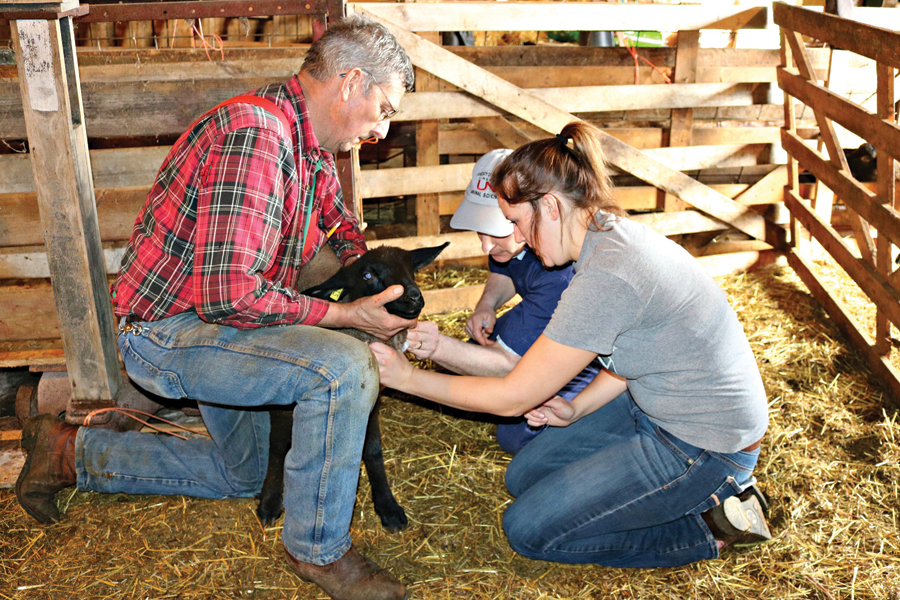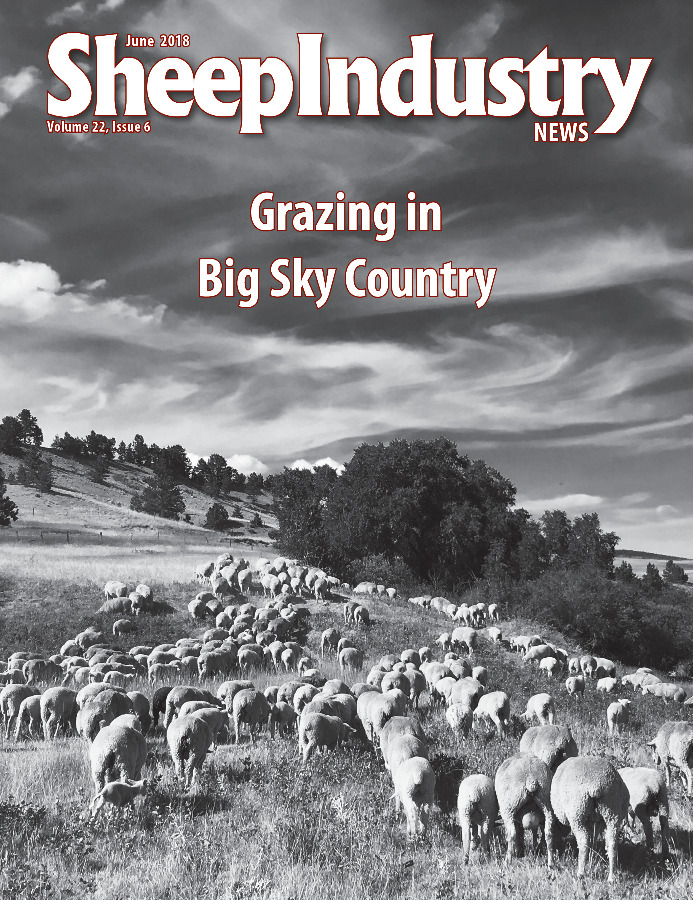Finding the Road Forward
Genomics Provide Next Step in Industry
TERRI QUECK-MATZIE
Special to the Sheep Industry News
In its quest to bring increased productivity and profitability to the American sheep industry, the National Sheep Improvement Program is taking the next step.
“We need to begin to use genomics to complement, yet by no means replace, the phenotypic and pedigree data we currently collect,” says Ron Lewis, Ph.D., professor of animal breeding and genomics at the University of Nebraska-Lincoln and NSIP’s technical advisor.
 NSIP is set up to predict the genetic worth of sheep in members’ flocks by measuring pedigree information and performance for a number of traits related to wool, growth, carcass and reproductive merit. It helps producers select the best breeding stock for their desired outcomes.
NSIP is set up to predict the genetic worth of sheep in members’ flocks by measuring pedigree information and performance for a number of traits related to wool, growth, carcass and reproductive merit. It helps producers select the best breeding stock for their desired outcomes.
As breeders of other species of livestock are discovering, there is an entire slate of traits that are not as easy to measure. Disease resistance, eating quality, longevity, feed efficiency, methane output – all affect productivity of the animal and the ranching operation.
“As we move forward, there are advantages for us to begin measuring attributes of our animals that are more difficult to capture,” said Lewis. “A focus on the environmental footprint of our production systems is increasingly recognized by the markets as part of our role in society. To the producer, traits related to sustainability are therefore becoming more economically important.”
Indeed measures of animal well-being and fitness, such as lamb survival and ram fertility, are often more challenging to capture.
“We can accurately predict the performance of several traits determining productivity in sheep,” said Rusty Burgett, NSIP Program Director. “However, there are other traits that are pretty difficult to measure, so we need another tool in our toolbox to get the whole picture and produce our products as efficiently as possible.”
Burgett and other NSIP board members recently spent time at the Mickel Brothers Sheep Company in Spring City, Utah, collecting DNA samples. It’s the first step in creating a system of infrastructure to process and assess genomic information.
“First of all,” said Lewis, “it is important to understand DNA is not a golden bullet. There is some misconception about that. There is no magic gene. That’s not the way it works. As we start to collect and use genomic information, phenotypes become even more important. DNA is one more tool and the two work along side each other.”
Lewis emphasized producers must weigh the cost versus the benefit of additional testing and information. That means the process and systems associated with adding genomic profiles to breeding animals’ data needs to be cost effective and applicable to market forces.
“We need to be realistic about the cost-benefits, especially in areas where the genomic information only marginally adds to the characteristics we already measure,” Lewis said.
Still, to Lewis and producers tuned to the NSIP approach, there is benefit in additional information, particularly on the more abstract traits – traits that are beneficial to individual flocks and the industry as a whole.
“We need to think broadly in a collective way and gather the right information to help the industry,” he said.
While the sheep industry is the newcomer in livestock circles to the use of such data, Lewis said that gives it an advantage.
“We can benefit from others’ mistakes and missteps,” he said. “We can leverage what they have learned and do better.”
For one thing, multi-breed evaluations have to happen, according to Lewis. In the beef industry, for example, genetic evaluations tend to be breed-specific, and the breed associations can be proprietary about their process and information.
“What we need in the U.S. sheep industry is one central agency for accumulating genomic information,” he added. “Currently, there is no central repository for DNA samples, nor is there general funding available for testing the samples collected.”
That central agency might ultimately be NSIP, although the industry players working on the issue are far from making such a determination.
“NSIP has adopted the role as the ‘genetic foundation for a profitable sheep industry’ and incorporating DNA technology is a logical progression,” said Burgett. “We are committed to doing anything we can to keep the sheep industry moving forward.”
“There are a lot of moving pieces to the mechanics of storing samples and processing data,” said Lewis. “We’re working to lay out an industry structure for the most cost-effective and practical way to do this.
“The important thing is the technology – the computational technology – for using genomic information already exists. What we do needs to feed into the systems that are already in place. This is an exciting tool, and there is a lot of enthusiasm for it. We just have to remain realistic about the time frame and mechanics of incorporating genomics into our industry.”
NSIP is using its education and communication network to help the effort.
“In order to move forward in implementing this technology, we need to focus on the key issues the industry is struggling with and how we can use DNA information to help solve them,” said Burgett.
To achieve this, NSIP is developing a survey for sheep producers throughout the United States to voice their opinions on the direction to take.
“This will be the industry’s opportunity to let us know what they want us to be looking into to move their operations forward,” Burgett said.
Back at the ranch, Burgett and the Mickel Brothers are refining sample collection techniques.
“We’ve tried several sampling techniques for DNA over the past few years. We’ve collected blood cards and tubes as well as tissue samples, but we needed to find a method that was easy for the rancher to use as well as providing a good, usable sample for the scientists,” said Burgett. “The tissue sampling units we are using now collect a small ear punch into a tube of preservative that is quick and easy to use and gives the labs what they need. If you can apply an ear tag, you can take a DNA sample with this applicator. We are doing it while docking and we did not slow down the line whatsoever.”
It’s a procedure that might soon be part of the sheep producer’s normal routine.
“Through collaboration of producers and researchers, we can keep moving forward and become more efficient and profitable at producing lamb and wool,” said Burgett. “Our goal is to produce a tool that farmers and ranchers can use in their own corrals that can help make them more productive. To do that, we’ll need some help from producers to indicate what will or won’t work for them, and what information they’d like to progress.”


